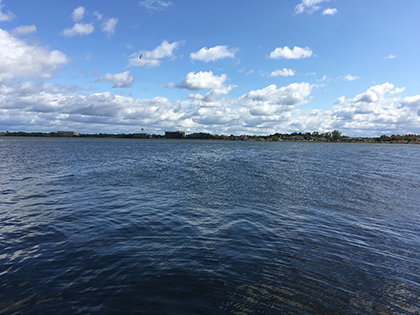by Ellen Wolter
Minnesota Compass spent last fall traveling across the state and listening to learn how we can improve our data and tools for greater Minnesota. By gathering feedback from and connecting with communities across the state to learn about key strengths and issues in their regions, we are working to make Minnesota Compass more relevant to greater Minnesota's needs.
Who did we talk to?
We held twelve sessions across greater Minnesota in Alexandria, Austin, Bemidji, Brainerd, Crookston, Fergus Falls, Grand Rapids, Hibbing, Rochester, St. Cloud, Willmar, and Worthington.

Through these listening sessions, Minnesota Compass staff connected with over 200 community members from about 75 communities. Listening session participants represented multiple sectors, including nonprofit, business, education, health care, philanthropy, and local, state, and federal government.

We also heard about challenges that regions are facing: poverty and wage misalignment with cost of living, a growing aging population, resistance to growing racial and ethnic diversity, child care affordability and availability, broadband access, high cost of housing, workforce shortages, and protecting natural resources.
Community engagement and pride
Listening session participants were consistently proud of their communities. They expressed that most residents have a loyalty and devotion to their community that makes them collaborative and engaged, working together to solve key issues. Attendees noted high community engagement, volunteerism, charitable giving, and collaborative, innovative problem solving.
Cost of Living and Wages
Many of the issues residents shared were intertwined with the desire to keep greater Minnesota communities vibrant and strong by sustaining and growing strong economies, ensuring that the basic needs of residents are affordable, and maintaining a high quality of life. The ability to afford child care, housing, and basic needs was noted as a key issue in all greater Minnesota regions. The issue affects both employees and employers, and is closely related to other issues noted below.
Transportation
The need for additional public transportation options or access to transit alternatives was identified as a key issue at all listening sessions. Attendees shared that many residents in their areas are without a car or access to reliable transit options. This impacts their ability to travel distances, often essential in greater Minnesota areas.
Child care cost and availability
Residents in communities across the state shared difficulties in finding and paying for quality child care. Lack of affordable and available child care impacts many of the other issues raised in these sessions, including workforce shortages (e.g., available workers, recruiting talent to rural areas), limited economic growth (e.g., inability to grow businesses due to small workforce), and stagnant wages (e.g., significantly lowers available income if paying for child care or unable to afford child care, if available).
Broadband access
Affordability and availability of broadband access was described as insufficient across the state. In some areas, high-speed broadband services had recently been enhanced but the services were not affordable for all residents. In other areas, broadband speeds were still inadequate and connections were limited. Broadband access impacts workforce recruitment for businesses and residents throughout the state, and lack of broadband access limits telework opportunities in remote areas.
How are these issues different in communities across the state?
Across the state, listening session participants highlighted the uniqueness of their regions and communities. Our full summary of the greater Minnesota listening sessions outlines the regional strengths and issues that were raised in unique communities across the state. Even when similar issues were raised, the ways that these issues are playing out in different regions and communities are quite distinct due to their unique economies, culture, geography, and demographic shifts.
What's next?
This month, we are launching a powerful new tool that will allow you to build, compare, and draw a data profile for your own community of interest – anywhere in the state of Minnesota!
In addition to the new tool, we are enhancing the data we provide for Minnesota's regions, counties, and cities. Our enhanced geographic profiles will provide greater depth on issues like:
- Cost of living
- Wages
- Travel to work and access to vehicles
- Child care costs
- Preschool enrollment
- Parents' employment status
- Households with access to high-speed broadband
In short, we are making enhancements to our site that respond to the strengths, issues, and data needs shared by residents across the state. Thank you to all who participated in our listening sessions last fall – we are excited about the ways that your voices are making our Minnesota Compass site more responsive and relevant! Stay tuned for the launch of these new tools and tables later this month.
What issues are on the minds of people across the state?
Across the state we heard about key strengths that make each region vibrant: high quality of life, sense of community, arts and culture, committed and quality local leadership, growing racial and ethnic diversity, natural resources, education systems, economic growth, and innovation.